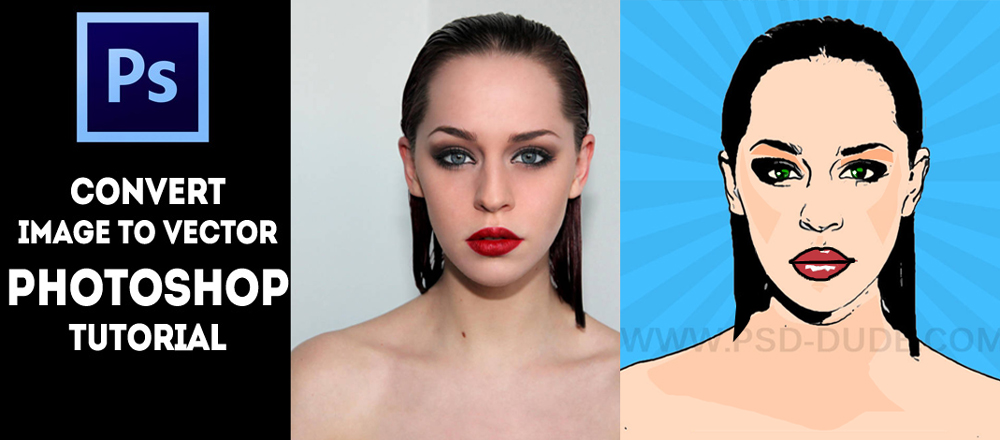

Make sure it sits below the “Background Copy” This way you will just see the path and colour won’t get in the way. Turn the visibility ON for the “Background copy”. If you do, your resulting image will be BLAND, BORING and LACK ANY ARTISTIC MERIT! Please please please don’t use it to create your vector. (Personally I always find the nose to be a little difficult and use the posterize layer to help me). The posterized layer is only there as a rough guide for when you get stuck. Your layer palette should now look like the one shown above.

Set the level to approximately 9 and click OK. Working on the middle copy desaturate it (Ctrl + Shft + U) Open your image in Photoshop and duplicate the background layer twice. Bigger IS better in your selection of the photo to turn into a vector. Anything smaller than 600 x 600 pixels isn’t going to be much good at all. Just be careful when you are selecting the image that you are going to vector…it must be a decent size so that you can zoom in and still see lots of detail. I think this is a great idea because hopefully it motivates you to actually finish the thing and do a good job. Lots of people do vectors of their favourite musicians and actors as a sort of tribute. You are going to be looking at this image for hours and essentially your vector image will be similar to this photo. Make sure you REALLY like the photo that you are starting with. I suggest you read through the entire tutorial before you begin… The Set Upįirst you need to choose the image that you are going to vector. To see a better sized version of the finished vector just click HERE As long as all your layers are shape layers then you have a vector piece of art…That means you can scale the original psd up and down in Photoshop and it will remain perfect and unpixelated!! The final output will NOT BE a vector file (it will be a rasterized jpg etc), to output a vector file you need to use Adobe Illustrator.
#Photoshop vectorize image how to
If you don’t know how to use the pen tool just do THIS TUTORIAL first, (it’s not hard honestly).ĭon’t merge or rasterize your shape layers. In order to even start to think about doing this tutorial YOU MUST KNOW HOW TO USE THE PEN TOOL. We’ll be creating shape layers which are vectors. In this tutorial I hope to shed some light on how to make vector art and more importantly how to make really great vector art with Adobe Photoshop.

Especially if you want to create OUTSTANDING art. Be warned though, vector art does take a lot of time and patience. It’s not hard to do and you don’t need to be able to draw to create it. This way you get the best of both worldsVector art is REALLY popular at the moment. That will let you either edit in iPhoto (double click on the thumbnail) or in PS (Control-click on the thumbnail and seledt "Edit in external editor" in the Contextual menu). If you want to use both iPhoto's editing mode and PS without having to go back and forth to the Preference pane, once you've selected PS as your editor of choice, reset the Preferences back to "Open in main window". Also I suggest the Maximize PSD File Compatabilty be set to Always. NOTE: With Photoshop Elements 6 the Saving File preferences should be configured:
#Photoshop vectorize image update
This method will let iPhoto know that the photo has been editied and will update the thumbnail file to reflect the edit. You'll need to either select JPEG from the menu and save (top image) or click on the desktop in the Navigation window (bottom image) and save it to the desktop for importing as a new photo. Window that indicates that PS wants to save it as a PS formatted file. If you immediately get the JPEG Options window make your selection (Baseline standard seems to be the most compatible jpeg format) and click on the OK button. When you're finished editing click on the Save button. Using Photoshop (or Photoshop Elements) as Your Editor of Choice in iPhoto.ġ - select Photoshop as your editor of choice in iPhoto's General Preference Section's under theĢ - double click on the thumbnail in iPhoto to open it in Photoshop.


 0 kommentar(er)
0 kommentar(er)
